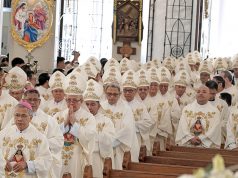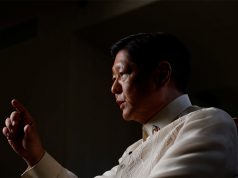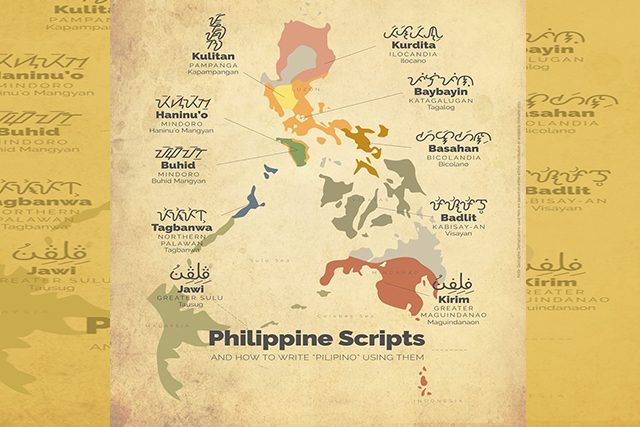
A group of Filipino advocates sought to educate the public on different styles of handwriting in the Philippines amid the recent criticisms on the study of Korean and other foreign languages in public schools.
Photos of Philippine scripts and their origins were circulated by the group called Odyssea: Nature, Culture, People in a Facebook album on November 18.
Bago tayo magsimulang magsulat ng KOREAN Hangul, alamin muna natin ang iba't ibang sulat PILIPINO.Ngayong mainit na…
Posted by Odyssea: Nature, Culture, People on Sunday, November 18, 2018
“Ating kilalanin ang pagkakaiba ng ating wika’t sulat dahil hindi lamang sila nariyan para tulungan tayong magkaunawaan, kundi ito ay tanda ng ating patuloy na inaalam na pinagmulan, hindi-kinalilimutang kasaysayan, at nananatiling natatangi nating pagkakakilanlan,” Odyssea said in the caption.
Odyssea said that with the recent decision on dropping the Filipino language and Filipino literature as core subjects in tertiary education, it’s now necessary to revisit the style of writing of indigenous Filipinos.
“Higit sa pagtatalo tungkol sa lalong pagpapalakas ng “Pambsang Wika” na itinuturo sa nakararaming Pilipino, mainam din alalahanin na isa lamang ito sa buhay na wika’t sulat na umiral o nananatiling umiiral sa Pilipinas,” it said.
The Supreme Court lifted of the temporary restraining order it placed on the Commission on Higher Education Memorandum of 2013 which excludes Filipino language, Filipino literature and the Constitution as core subjects in colleges.
The Department of Education also implemented the study of Korean language as electives in selected junior high schools in the National Capital Region.
Get to know indigenous scripts
The album titled “Philippine Scripts” featured three photos. The first photo showed ten native scripts that express the word “Pilipino.”
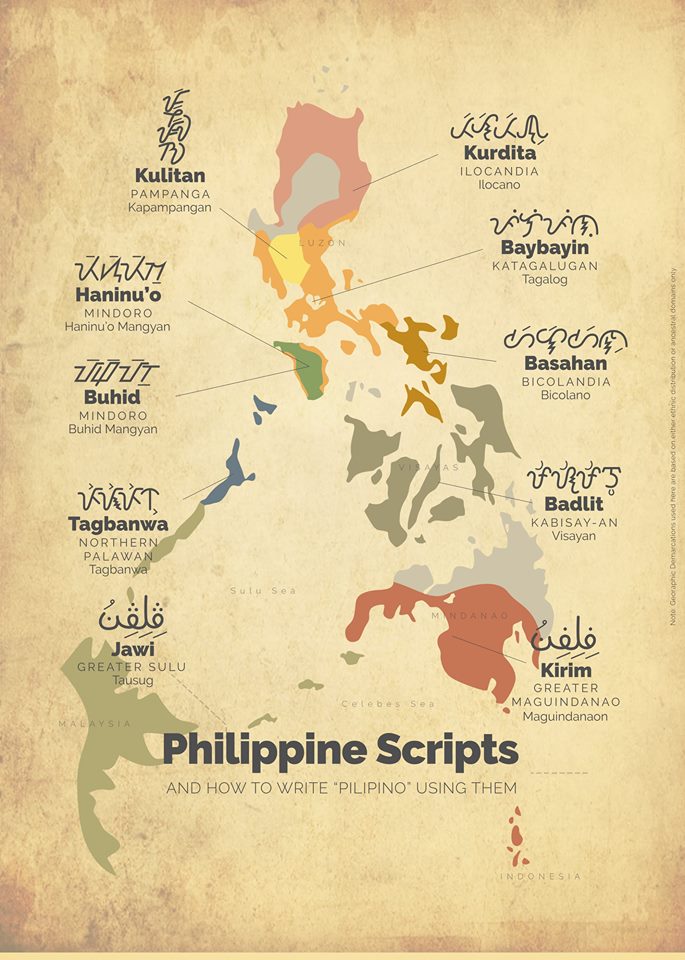
The interest in the study of Baybayin became popular in Manila in recent years and was even proposed to be inscribed in official communications by virtue of House Bill No. 1022 last April.
The second photo traced the origins of the writing systems in the country as a whole, in Mindanao and in Luzon and Visayas. All the scripts are said to be from the Egyptian writings or hieroglyphs.

The last image in the album is a comprehensive family tree of writing systems in the Philippines, from the foreign parent letters to the localized letters.
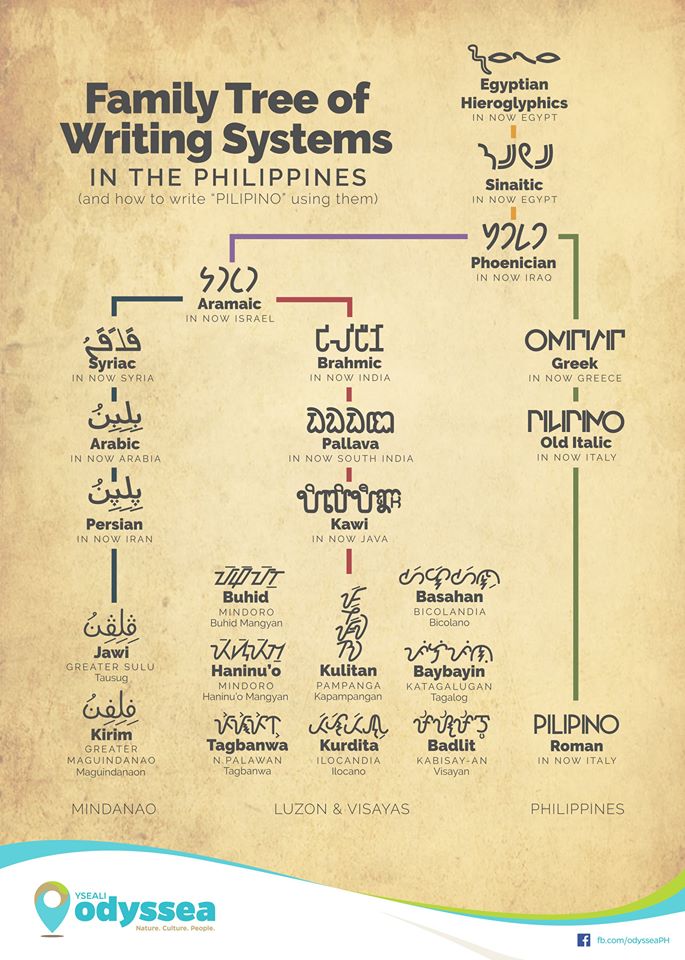
How the modern Filipino alphabet came to be
Most history books tell of Baybayin as the notable pre-colonial writing style then. It was also the one studied by the early Spanish books “Doctrina Christiana” (1593) and “Events in the Philippine Islands” (1609).
During the colonial period, Filipinos who converted into Catholicism were then taught the Spanish language and the Latin alphabet.
In the 17th century, an alphabet was developed with 32 letters called abecedario.
It was the Americans who introduced to the Filipinos its 26-letter alphabet during their 40-year occupation.
During the Philippine Commonwealth, the abecedario became abakada with 32 letters.
This revised alphabet became the national language’s alphabet from the 1940’s to the 1970’s.
It was only in 1987 when the current 28-letter Filipino alphabet was established as stated in the Constitution.








